On February 11th, Lee Hae-in, a member of the Korean national team, won South Korea a gold medal in the 2023 Four Continents Figure Skating Championships. As her winning is the first gold for the country since Kim Yuna’s record 14 years ago, the Korean public’s attention to figure skating has risen more than ever. However, the sport is suffering a long controversy with issues to be addressed. Therefore, the Sungkyun Times (SKT) will now look into the necessary changes for figure skating to resolve its chronic problems.
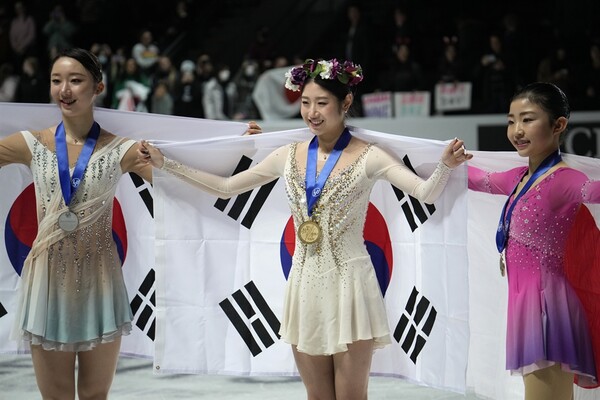
Introduction to Figure Skating
Figure skating is a sport in which contestants earn points based on the skills and choreography they perform on the ice. Today, figure skating in the Winter Olympics consists of four disciplines: Women’s singles and Men’s singles, both in which contestants perform alone (single skating), Pair Skating, and Ice Dance, performed by pairs of a male and a female skater. However, the event that has the highest profile is without a doubt Women’s singles. Same as the Men’s, it is composed of a short program limited to 2 minutes and 40 seconds, and free skating which lasts about 4 minutes. The performance’s final scores are calculated by summing up the scores of these two segments. For each program, the points are awarded by adding the Technical Element Score (TES), the total score of the technique section, and the Program Component Score (PCS), an evaluation of the program’s overall impression. In the case of TES, referees add or deduct the Grade of Execution (GOE) depending on the Base Value elements’ performance, such as jump, spin, step sequence, and choreographic sequence. For instance, in jump, the GOE is given based on the scale and height of each attempt. Regarding the PCS, three components of the program — Skating Skills, Composition, and Presentation — are judged. To elaborate, the variety and clarity of edges are evaluated through Skating Skills, connections among the elements in Composition, and expressiveness and musical sensitivity in Presentation.
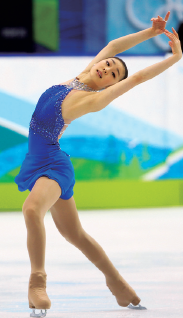
Threats to a Fair Competition
-Skewed Ice Rink
Since the entire score of a skater’s performance is determined by judges, controversies regarding biased judgments in figure skating were a constant occurrence. The main reason for the dispute is that the subjectivity of the referees is often reflected in the score; concerning the TES, there are judgments undermining the elements of GOE by conniving the under-rotation of jumps. For instance, in the 2022 World Junior Figure Skating Championships, the under-rotated triple Salchow of the gold medalist Isabeau Levito was not deducted. Moreover, the PCS, in which the scoring standard is more ambiguous than the TES, aggravates such a problem; regardless of the actual impression of the performance, subjective judgments of the referees directly affect the scores. Furthermore, unlike most skaters whose PCS gradually increases by developing the quality of their programs through competitions, some have their scores skyrocket in a short period. The Ladies’ Single skating competition of the 2014 Winter Olympics well represents such issues, as Adelina Sotnikova’s PCS increased by nearly 20 points within two months while Kim Yuna’s numbers remained almost unchanged from her previous year’s scores.

-Endless War on Doping
Generally, women figure skaters cannot maintain their careers for a long time as their secondary sex characteristics hinder their jump abilities. As this makes young female athletes more competitive skaters, suspicion arises that Russia has conducted doping to maximize their physical ability. Since 2017, Russian female skaters who have succeeded in quadruple jumps have started to appear frequently. The peculiar thing was that most of them had skinny bodies with excessive muscles, which seemed odd to be naturally developed. The doping scandal of 15-year-old Russian skater Kamila Valieva in the 2022 Winter Olympics became solid evidence that confirmed such suspicion. Regarding the case, Lee Ho-jung, a figure skating commentator of SBS, said, “Since doping tremendously increases athletic performance, Valieva’s qualification for the Olympics was completely beyond comprehension. Therefore, I stayed silent instead of commenting during her performance.” Another problem arises that those suspected to have instigated doping to Valieva have not been disciplined yet. Eteri Tutberidze, her coach who seems to have urged her doping, has still not been punished. Moreover, the current countermeasures for doping cases are inappropriate. The Court of Arbitration for Sport (CAS) allowed Valieva’s competition in the Olympics even though the banned drug Trimetazidine was detected in her sample collection at the 2022 Russian Figure Skating Championships.
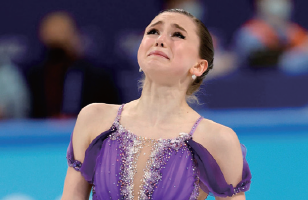
To Jump Over the Obstacles
-Establishing a Reliable Standard
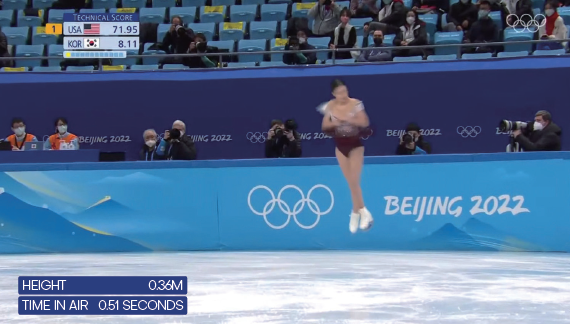
To ensure fair competition for every athlete, a precise standard of a judging system is essential both in the TES and the PCS. First, a video assistance judging machine should be gradually applied at the TES, starting with the judgment of the jump’s rotation. Machine referees are already a major trend in sports. Given the fact that the 2022 U.S. Open tennis tournament has replaced human judges with an automated optical system, the figure skating grading system should also actively accept this tendency. Since the height and distance of jumps are already calculated and broadcasted in major competitions like the Olympics, establishing an automated GOE judging system in figure skating would be possible. Machine judging could also be introduced in PCS scoring; Fuji TV, a Japanese television station, has developed a technology called Ice Scope that can measure the ice coverage of the skaters. With the application of a new judging system, efforts to pursue objectivity are also essential in the PCS. Reflecting such requests, the ISU set a maximum score per program component when serious errors affect the delivery of the performance at the 58th Congress last year.
-Competition without Drugs
For the sake of the skaters, the ISU decided to increase the age limit for senior skaters from 15 to 17 years at last year’s congress. There are hopes that this would not only protect the physical and mental health of the skaters but it would also shield young athletes from the overheated competition and the fallout it causes: doping. Additional methods outside of the game are also needed; commentator Lee emphasized the responsibility of the adults around young athletes saying, “Currently, education on doping is mandatory to the skaters in Korea. These should expand to the coach and the protectors of the players.” Furthermore, the way doping tests are executed should also be improved, as cases where excreted substances of prohibited drugs before the competition by using diuretics may exist. In this case, the method of the Ultimate Fighting Championship (UFC), in which the test is carried out frequently and unexpectedly would be considerable. Lastly, regardless of one’s career or age, athletes and related personnel who are involved in doping must be punished. Although Valieva came out in the Olympics, efforts to redress such injustices are constantly being held. On February 21st, the World Anti-Doping Agency (WADA) appealed the case to the CAS, requiring her four-year period of ineligibility and disqualification of her results since the country’s national championships.
Ways to Enjoy Figure Skating
01. Step Sequence
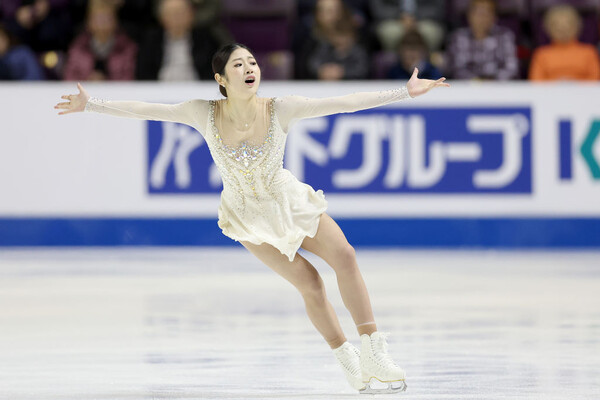
Step Sequence is the element that maximizes the artistry of figure skating. Pay close attention to the skater’s movement and the patterns they draw on the ice. In the 2022-2023 season, Lee Haein showed a tremendous performance on step sequences in her free skating program Phantom of the Opera. Her step at the Four Continents Championships would never fail to amaze you!
02. Choreographic Sequence

In Choreographic Sequence, skaters express the program's artistic features by using graceful movements such as Ina Bauer and Spiral. In the recent season, Kim Ye-lim showed a beautiful layback Ina Bauer in her free skating program Summer of 42. The way she resonates with the music leaves a deep impression on the audience.
03. Spin

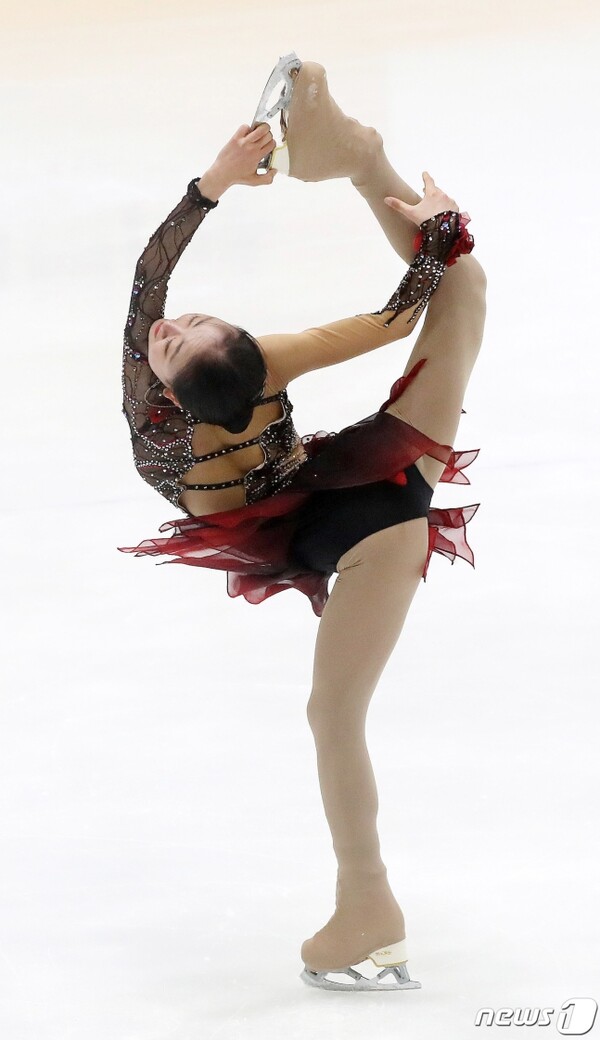
Skaters could receive GOEs in spin depending on the axis stability, rotation speed, and the uniqueness of the position. Among the Korean skaters, Shin Ji-a and Kim Chae-yeon perform particularly elegant spins; in their 2022- 2023 season performance The Giving and Poeta en el Viento, the combination spins are marvelous.
